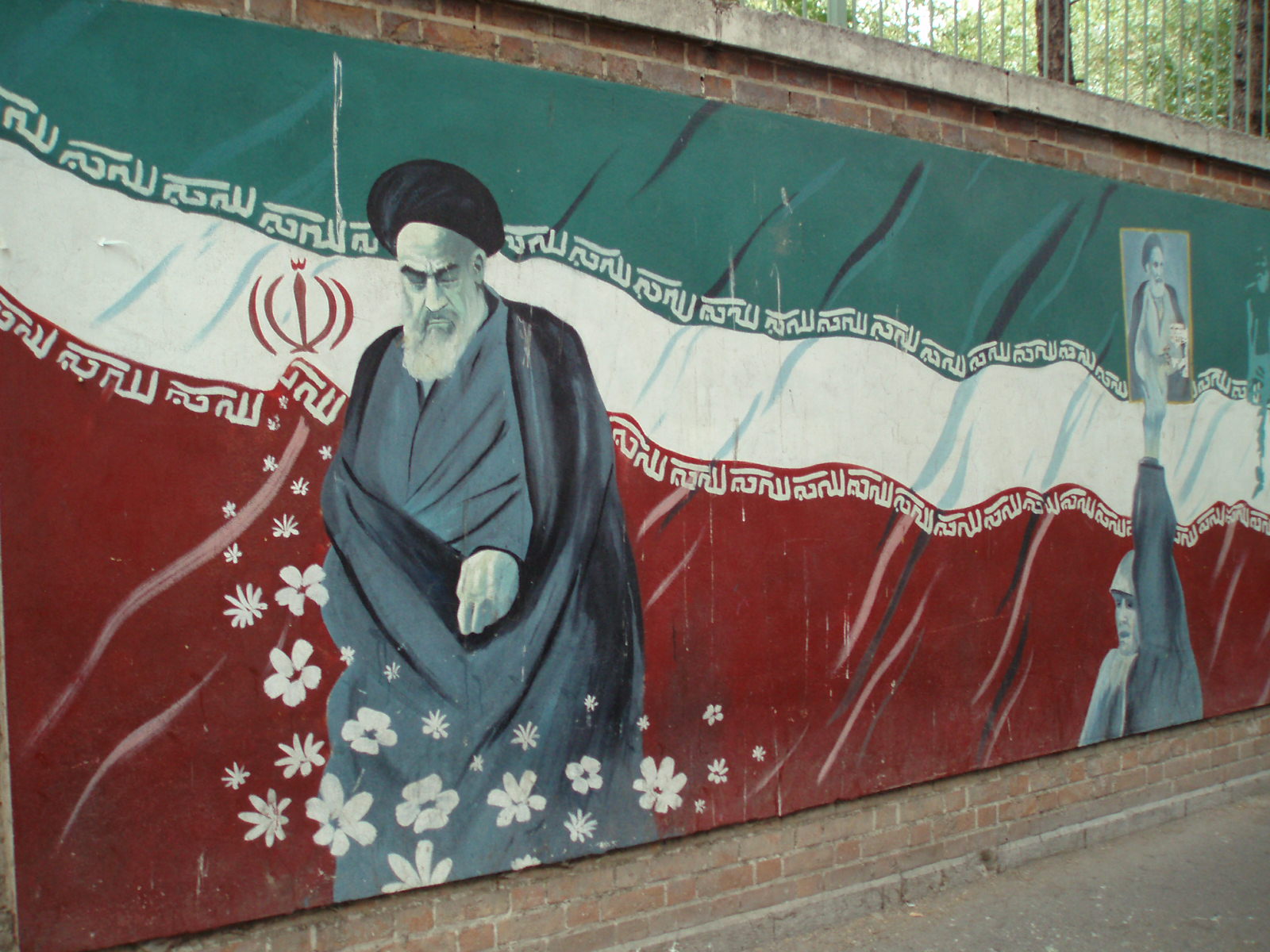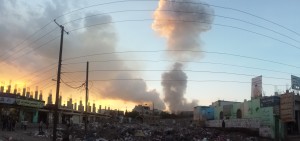A Weakened Saudi Arabia and Its Rift With Iran


After a rapid, and unfortunate, series of events that took place in the Middle East during the first weekend in January, Saudi Arabian and Iranian relations have taken a negative turn. On January 2nd, Saudi Arabia engaged in its largest mass-execution in over 35 years. 47 people were executed, including a prominent Shi’ite cleric Nimr al-Nimr for alleged terrorism. Despite international efforts to forestall his execution, the Saudi regime moved forward. This sparked inflamed reactions among many Shi’ites, particularly in Iran. Protesters ransacked the Saudi embassy in Tehran, smashing parts of the building and throwing firebombs. The Iranian police responded by removing the protestors from the embassy and arresting 40 Iranians.
The unanticipated Saudi response shook the region. In his announcement, the Saudi Foreign Minister Abdel al-Judeir proclaimed they would be cutting off diplomatic ties with Iran, and give Iranian diplomats 48-hours to evacuate the country. In the same statement he said, “The history of Iran is full of negative and hostile interference in Arab countries, always accompanied by ruin, destruction and the killing of innocent souls.” Not long after Saudi Arabia’s announcement, Bahrain, Kuwait, Sudan Djibouti also cut their diplomatic relations with Iran. The United Arab Emirates and Saudi Arabia downgraded its relations, but did not completely cut off its diplomatic ties.
Saudi Arabia and its allies, notably the Gulf Cooperation Council member-states, are taking sides on this issue. This is unsurprising in the context of the Middle East, where identity politics underlie much of the dynamics in the region — the most divisive of which being the Sunni and Shia divide. The current hostility between Iran and Saudi Arabia dates back almost 40 years, at the time of the Iranian Revolution in 1977. The new Islamic Republic thereafter established itself as the proud leader for all Shia Muslims across the world. Similarly, Saudi Arabia emerged as a strong leader for all Sunni Muslims. As such, the tensions between these two regional superpowers have been termed the ‘Middle Eastern Cold War’. Each superpower has both regional and international allies who offer their support. However, neither Iran nor Saudi Arabia has engaged in outright, interstate wars; rather, they engage indirectly through the use of proxy militias, which has prolonged this delicate game of underlying hostilities for decades. The question must then be posed, what has changed since that led to this turn of events?
A quick observer may simply turn to the execution of Nimr al-Nimr for answers. In a such case, it becomes important to understand the significance of who he was. Nimr was a prominent cleric, who was very popular among Saudi Arabia’s Shia minority community, accounting for 10-15% of its population. He was valued for being an outspoken critic of the Saudi regime in his province, where the majority of the population is Shia. During the Arab Springs, he encouraged and supported the marginalized Shia communities to organize protests. Nimr was arrested in 2012 because he was viewed by the Saudi government to be a hostile critic to the regime, and believed to be working with Iran. At the same time, his status became elevated in Shia communities as they believed he voiced the persecution all Shia minorities face against their Sunni oppressors. Although Nimr clearly encapsulates the divide between Saudi Arabia and Iran, through their Muslim identities, this incident alone is insufficient to explain the cutting of ties between the adversaries. Simply put, the execution of Nimr al-Nimr was a catalyst, and not the cause.
When analyzing the event, one cannot ignore the recent degradation of Saudi Arabia’s relative position both domestically and internationally. At present, Saudi Arabia faces many internal and external problems that have strained the regime. The first of which are the country’s economic hardships. Oil prices fell by nearly 50% in the last twelve months, which has seriously damaged Saudi

Arabia’s income. This has caused two consecutive budget deficits and increased the strain on the government. For the first time, they are considering implementing policies like income taxes and further liberalization of its markets. Furthermore, Saudi Arabia has been engaging in a costly war in Yemen for over 10 months. This intervention against Houthi rebels was intended to be brief and successful, however, this has not been the case. There have been high civilian causalities during this war, which has made the government largely unpopular domestically and internationally.
Finally and most importantly, is the change in the regional balance of power. Since the signing of the Joint Comprehension Action Plan between Iran, the United States and other global powers, a red flag has been raised by Saudi Arabia. It perceives that the US is warming towards Iran, and fears it may continue pivoting towards Tehran. The nuclear accord signals to the Saudis a form of US retrenchment away from its traditional, decades-old Middle Eastern ally. It is also perceived as a threat by the Saudis as potential growth in Iran’s influence. This is largely due to the unfreezing of repressive sanctions against the Islamic Republic, which will lead to over 100 billion in assets. The Saudi regime fears that this will allow Iran to increase its funding and assistance to its proxy militias, including Hezbollah. Additionally, the lifting of sanctions allows Iran to resume trade with allies such as Russia, who has begun agreements of arms shipments from Russia to Iran.
Due to these factors, Saudi Arabia senses a shift in the balance of power, with Iran possibly taking the upper hand. The domestic and international weakness of Saudi Arabia has motivated it to act to restore its relative regional position. At a time of fragility, Saudi rulers tend to turn to sectarianism. Through the use of deeply embedded identity politics, Saudi rulers are able to mobilize both their domestic population as well as their regional partners. In tough times such as these, the Saudis recognized the value of Nimr al-Nimr to the Shias, particularly in Iran, and aggravated these tensions to serve their interests. By cutting diplomatic ties with Iran, and other regional allies following their lead, Saudi Arabia has successfully turned tables with the sectarian divide between Shias and Sunnis.
Ramifications of these events will be significant, both in the short and long term. One immediate consequence will inevitably relate to the war in Yemen. Saudi Arabia has been directly involved in military action against the Houthi rebels, which the Iranian government reportedly supports.This war has had high civilian death tolls, and an enormous humanitarian crisis has ensued. Attempts at a cease-fire in Geneva have proved fruitless, and with heightened tensions between Iran and Saudi Arabia, it now seems that any possibility for peace has been pushed further away. Additionally, the diplomatic efforts to end the war in Syria will doubtlessly be impacted by the hostilities between Iran and Saudi Arabia. Peace talks are set to begin at the end of this month, between the Assad regime and opposition groups. In the case of Syria, both Iran and Saudi Arabia have been supporting opposing groups, whereby Iran supports the Assad regime and Saudi Arabia the anti-regime opposition groups. Thus, these peace talks are in a delicate balance, which can be easily offset by the escalation of tensions between the two states.
The long-standing hostility between the two regional powers is a cause of concern. Solidifying sectarian identities at a time when a united front is necessary to confront threats, notably the Islamic State, is counter-intuitive. It will take external pressures to push these two adversaries to a compromise, at a time when cooperation is vital.
